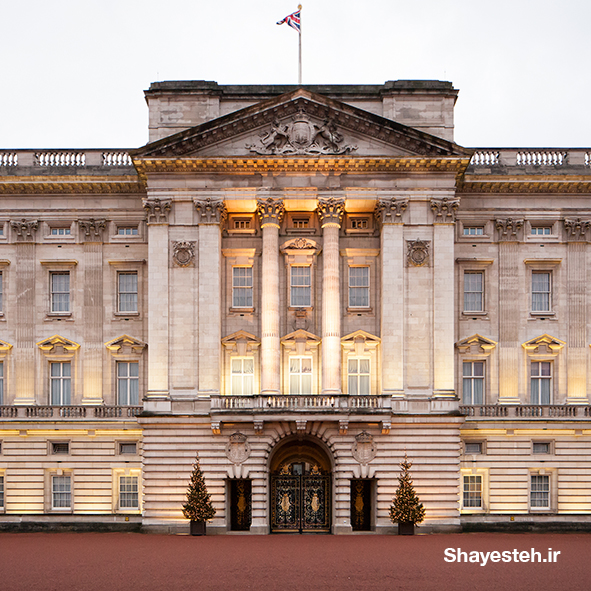در صورتی که اشکالی در ترجمه می بینید می توانید از طریق شماره زیر در واتساپ نظرات خود را برای ما بفرستید
09331464034
Topic:
When old buildings stand on ground that modern planners feel could be better used for modern purposes, modern development should be given precedence over the preservation of historic buildings.
Write a response in which you discuss the extent to which you agree or disagree with the statement and explain your reasoning for the position you take. In developing and supporting your position, you should consider ways in which the statement might or might not hold true and explain how these considerations shape your position.
وقتی نظر برنامه ریزان مدرن این است که ساختمان های قدیمی موجود می تواند برای اهداف مدرن بهتری استفاده شود، پیشرفت مدرن را باید بر حفظ بناهای تاریخی ارجح دانست.
پاسخی بنویسید که در آن درمورد موافقت یا مخالفت با این جمله بحث کنید و استدلال خود را درباره موضع گیری خود توضیح دهید. در توسعه و حمایت از موضع خود، باید روشهایی را در نظر بگیرید که طبق آن، این نظریه ممکن است درست باشد یا نباشد و توضیح دهید که این ملاحظات چگونه موضع شما را شکل می دهند.
موافق
- افرادی که در شهرهای مختلف زندگی یا کار میکنند، حق دارند که با تکنولوژی روز پیشرفت کنند. بنابراین، نمی توان تمام ساختمانهای قدیمی یک شهر را حفظ کرد. به هر حال به کارگیری معماری مدرن برای ساختمان سازی در شهرهای مختلف مورد نیاز است. با توجه به اینکه جمعیت انسان رو به افزایش است، دیگر نمی توان ساختمان های قدیمی با حیاط های بزرگ را در شهرهای پیشرفته حفظ کرد چون در این صورت فضای کافی برای زندگی مردم آن شهر وجود نخواهد داشت.
- بین حفظ آثار باستانی ساختمان های قدیمی و همچنین ساختمان هایی با معماری مدرن و جدید در هر شهر باید تعادلی وجود داشته باشد.
- برخی از ساختمان های قدیمی، طبق استاندارد های امروزی ساخته نشده اند و ممکن است برای ساکنین منطقه ایجاد عدم امنیت کنند. مثلا ساختمان هایی با بافت های قدیمی ممکن است در اثر زلزله به راحتی فرو بریزد و برای ساکنین خطرناک باشند. بنابراین، این ساختمان ها باید با معماری مدرن و استاندارد جایگزین شود.
مخالف
- ساختمان های قدیمی از ارزش و فرهنگ هر کشور به شمار میآیند. بنابراین، ساختمانهایی که جزو تاریخ هر کشور هستند، به عنوان میراث فرهنگی آن به شمار میآیند نباید به بهانه های مدرن شدن تخریب شوند.
- کشورهای بسیار زیادی، روشهایی را به کار گرفتهاند که از طریق آن ساختمانهای قدیمی خود را برای چند صد سال حفظ کرده اند و از آنها برای جذب توریست استفاده میکنند. آنها به خوبی این ساختمان های قدیمی را در یک فضای مدرن که آمادگی پذیرایی از تروریستها را دارد، جا داده اند. به عنوان مثال، هتل های بسیار شیک یا مراکز خرید مدرن در اطراف این مکان ها افتتاح کردهاند و این ساختمان های قدیمی را به یک جاذبه گردشگری فوقالعاده تبدیل کردند.
- پیشرفت تکنولوژی در دنیای مدرن، نه تنها موجب از بین رفتن ساختمان های قدیمی نشده بلکه موجب شده که کشورها بتوانند از روی تصاویر دیجیتالی پی ببرند که ساختمانهای قدیمی در زمان خود به چه شکل بودند و حتی آنها را به همان شیوه بازسازی کنند.
- حفظ آثار باستانی و ساختمان های قدیمی برای حفظ تاریخچه و هویت یک کشور اهمیت بسیار زیادی دارد و معمولا در این ساختمان های قدیمی با حفاری های متعدد آثار باستانی ارزشمندی کشف می شود که اگر فقط به بهانه مدرن شدن جهان، این ساختمان خراب شود آثار باستانی نیز از دست میرود.
Strategies
Restate the Issue:
In this case, you might reverse the order in which the parts of the issue appear and use a negative phrase.
In other words:
The preservation of historic buildings should not be given precedence over using the ground they stand on for modern purposes that have a better use.
You could also determine what question is being answered by the statement.
Should the preservation of historic buildings be given precedence over modern development?
Asking a question may help you to formulate your response to the issue.
Now think about the parts of the statement that provide evidence that you can affirm or refute.
a) old – This implies outdated or rundown. New is better.
b) better used – better is a comparative word. It is more than good but less than best.
c) modern purposes – Modern implies improved. It is the opposite of old fashioned.
d) development – This word also has a positive connotation. It implies improvement, evolution.
e) precedence – Whatever is being proposed is more important than other ideas. It should come ahead of other plans or ideas.
f) preservation – Again, the connotation is positive. To preserve is to save.
g) historic – Something historic is a representation of history. One generally thinks favorably of something that is described as being historic.
Opposing viewpoint:
Modern development should not be given precedence over the preservation of historic buildings that stand on ground, which modern planners feel could be better used for modern purposes.
The only new evidence in the opposing statement is the word not, which simply reverses the original position.
Alternatives:
Is there any other way to look at this issue? Can you qualify either of the statements? Are there any cases where one or the other of the statements might be true or not true?
New viewpoint:
When the preservation of historic buildings becomes a financial struggle or the land on which they stand could be used for community betterment, modern development should be given precedence over that preservation.
Identify parts of the new viewpoint that provide evidence for you to refute or affirm.
a) financial struggle – Surely communities and special interest groups cannot afford to preserve every building of an historic value.
b) community betterment– This is subjective. What one feels is betterment, another might feel is a detriment to the community. Who decides?
Examples:
a) Auschwitz is crumbling. There is strong debate over preserving what remains of the infamous Nazi concentration camp or the suitability of letting the buildings crumble. Is there a better use for this land?
b) Urban renewal generally involves tearing down existing structures to make way for improved buildings to house new business or offices or to improve traffic flow.
Sample 1:
The value of any object is subjective. Nostalgia for the simpler life of bygone days causes us to attach more value than appropriate to objects from the past. Historic buildings let us envision the people who lived in them and the daily activities they pursued. However, the needs of communities have changed, and sentiment may need to be discarded to meet those needs. Due to this fact, historic buildings may need to be taken down or otherwise changed to accommodate the needs of the current population.
Some cities have found ways to preserve historic buildings by erecting the new ones over them. Their front walls become part of the new facade. The cities' needs for more office space or apartments have been met and a record of the past has been saved for present and future generations. Many communities in the United States have historical societies who raise money for historic preservation, and, in some cases, old buildings can be listed in the Register of Historic Places and are supported by public funds. The future of projects like these depends on continued interest, and emerging generations may have different priorities.
How essential are old buildings in maintaining the character of a place? When one looks at several cities in Europe, he sees a cityscape very different from the one that existed prior to WWII when both Allies and Axis bombs destroyed ancient structures. The citizens of those towns and cities had no choice but to rebuild. Life went on. Currently, there is debate about the future of Auschwitz. What remains of the notorious Nazi concentration camp is in disrepair. Buildings that were not built to last in the first place are crumbling. Maintaining them is costly. Although many countries around the world have donated millions to the preservation of the site, some wonder if allowing the site return to its pre–WWII state is a more fitting memorial to what happened there. Could the money needed to restore the barracks, the crematoria and to maintain the museum be used in a more appropriate way to teach future generations about the dangers of hatred and prejudice?
Modern technology has made the preservation of old buildings and landmarks possible through photographs and video recordings. In fact, it is possible, with the click of a computer mouse, to take virtual tours of places one has never physically visited. These photos and videos live on the World Wide Web forever, and maintenance costs will be minimal. Access to these historic buildings is no longer restricted to those who can make the trip to their physical sites but is available to anyone with an Internet connection.
Change for the sake of change is frivolous and usually unnecessary, but towns and cities are challenged to make the best use of the spaces they have. Their needs have changed. A small city may need assisted living quarters for its senior citizens or recreational facilities for its young people. To accomplish that, city planners may have to make difficult choices, some of which could include the razing of old buildings.
Sample 2:
How have we educated ourselves about the history of mankind? It is through the historical buildings we see around us that we get an idea of how our forefathers lived. Heritage buildings and other forms of old constructions not only give us an insight into the living conditions of the past, but they are also eye-openers as far as the architecture in the past is concerned. However, what happens when these old buildings occupy land that can be effectively utilized for some modern construction? Instead of hastily deciding to demolish the old buildings or obstinately sticking to not letting a scratch come to the old buildings, the best solution would be to strike a balance between the preservation of the old architecture and the construction of buildings designed to serve modern needs.
We have always been curious to unearth the secrets behind the constructions carried out in the past which still continue to baffle all of us. Stonehenge in Britain is one the world’s most astounding piece of architecture. The construction of the Stonehenge is shrouded in mystery and man has only been able to speculate as to how it may have been constructed in the age when there were hardly any construction tools available. Take the example of the Sphinx and the Pyramids of Egypt, which are yet another architectural marvel. These pieces of architecture have served the purpose of throwing light on the lifestyles of ancient civilizations. Other old buildings or constructions may not be as famous or as baffling as the examples quoted above, but each old building provides us with immense information related to our forefathers. Not only do we get priceless information about the construction techniques in the past, but we also get access to various resources that help us understand our past.
It is obvious that demolishing old buildings can never be adjudged as the correct decision no matter how crucial the new construction is for the present society because demolishing an old building would be something like erasing a part of our history. There are numerous examples of old palaces, forts and heritage buildings that have been converted into luxury hotels that house shopping malls as well. The architecture, look and feel of the original buildings have been retained along with the new modern constructions. This is the best solution wherein an old building has not been completely damaged and it has been successfully modified into a building that serves the needs of the present society.
It is not necessary that it will be easy to strike such a balance in the case of every such controversy where a modern construction and an old building are concerned. For instance, consider a case wherein oil has been struck in the land which is a part of a heritage building. Should the old building be demolished to make way for an oil rig which is in the interest of the nation or should the government preserve the heritage building and ignore the oil well that lies below it? It would be a tough decision, but the government will have to find a solution wherein the oil can be pumped out without any damage to the old building.
The past, present and future are all very important in the development of a society. No society can afford to ignore its past in order to move into the future. The society should carefully strike a balance wherein it is able to preserve its past while being able to attend to the common man’s needs in the face of urbanization. Therefore, the best solution would be to find a solution by somehow preserving the old buildings and at the same time, allowing the new constructions also to come up.
نظرات کاربران
هنوز نظری درج نشده است!


